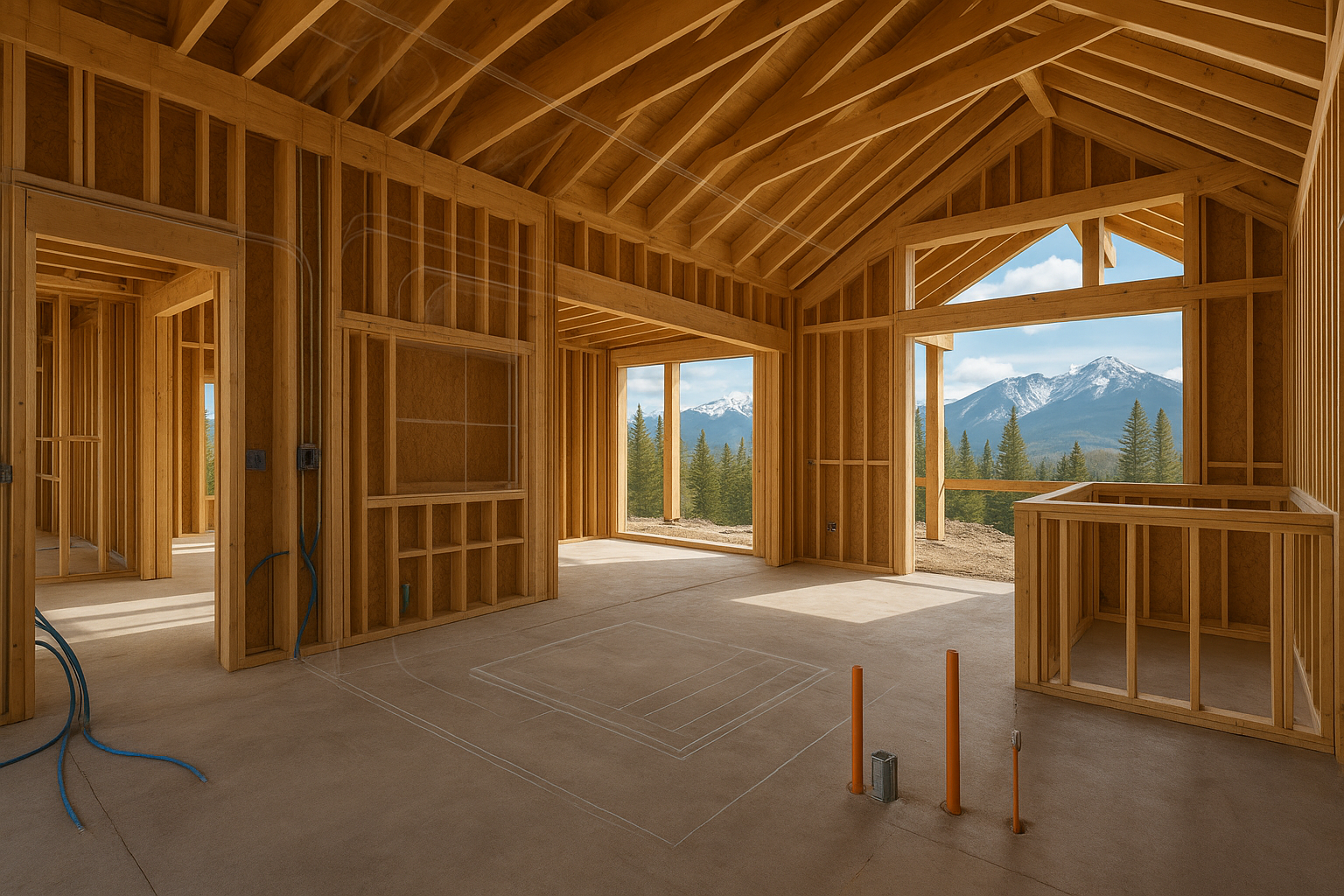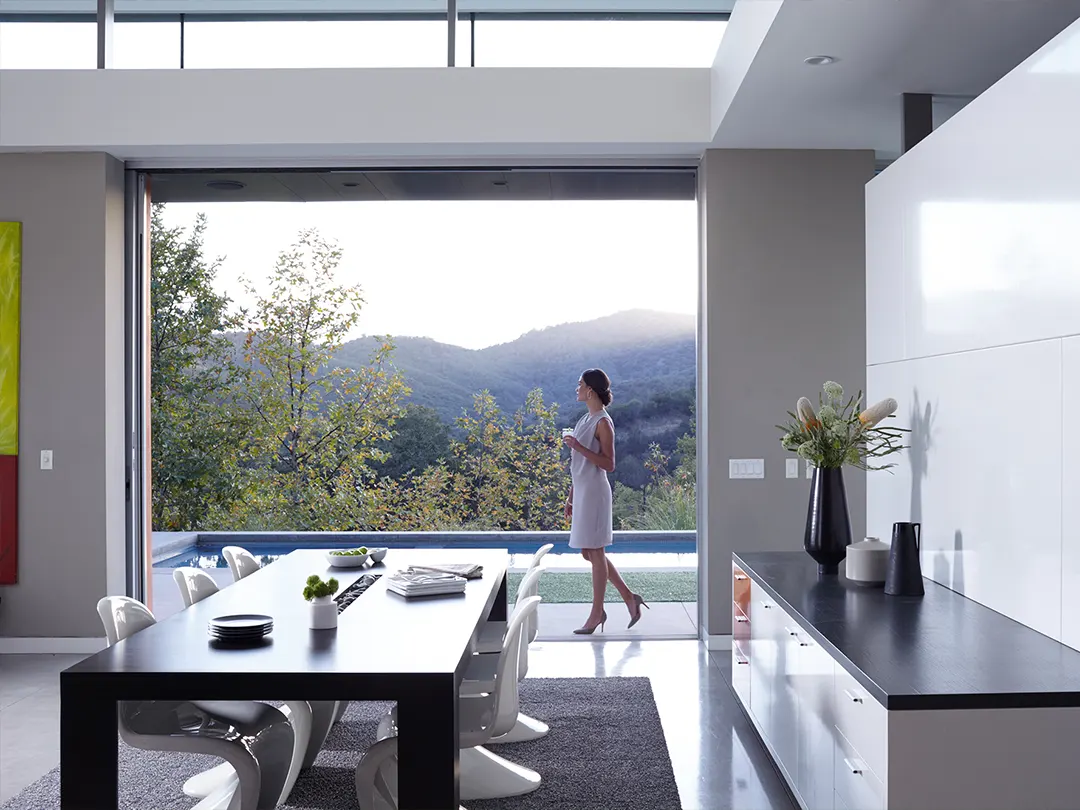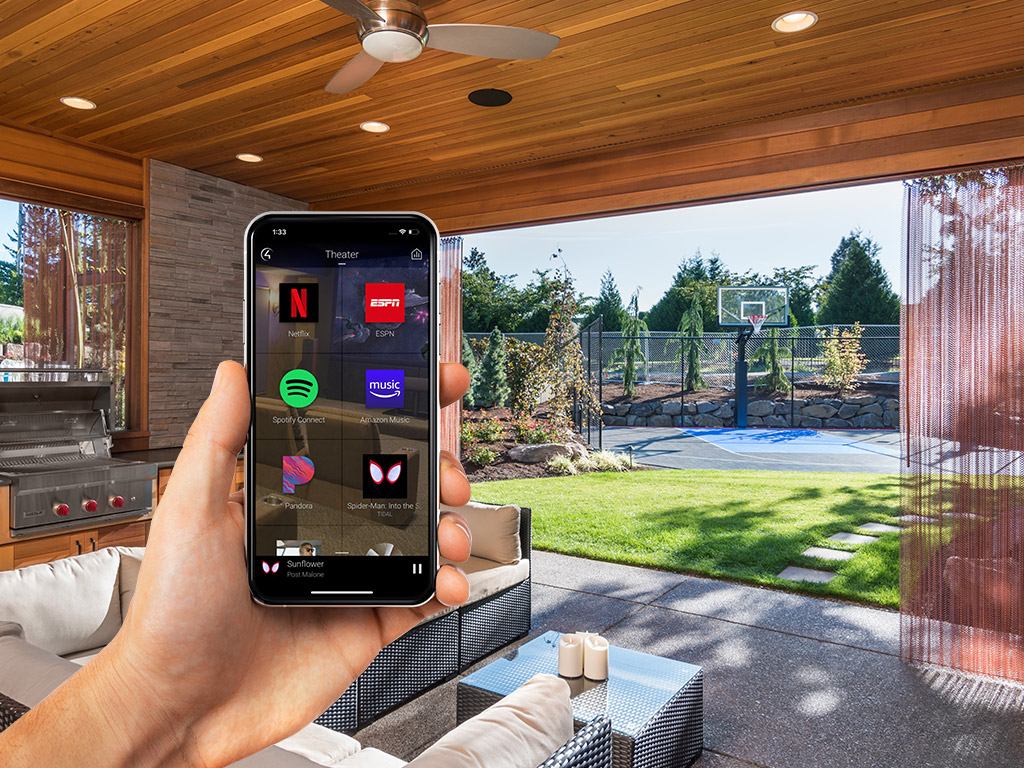Every luxury home builder has experienced that moment: you’re weeks into construction when your client mentions they’d love whole-home audio, or asks about motorizing those floor-to-ceiling windows you just framed. Suddenly, what should have been straightforward integration becomes an expensive retrofit requiring creative workarounds.
After 30+ years of technology integration in Colorado’s luxury homes, we’ve identified three critical systems that builders should address during early planning phases. When these technologies are considered alongside electrical and HVAC design, installation is seamless. When they’re afterthoughts, projects face delays, budget overruns, and compromised aesthetics.
Let’s walk through a typical luxury build timeline and pinpoint exactly when these decisions need to happen.
Phase 1: Pre-Design & Site Planning
Technology Focus: Power Management and Network Infrastructure
The foundation of any smart home isn’t the devices – it’s the power and networking infrastructure that supports them. Yet these systems are often relegated to “low-voltage” catch-alls or pushed to later phases.
The Cost of Waiting: When power conditioning and network design happen after architectural plans are finalized, you’re left compromising equipment locations, struggling for dedicated circuits, or cramming sophisticated networking gear into inadequate spaces.
The Colorado Challenge: Mountain homes face unique power stability issues from altitude, weather, and grid infrastructure. Additionally, large properties with guest houses, outdoor living areas, and detached garages require enterprise-grade networking that can’t be retrofitted with consumer equipment.
What We Recommend: Include technology infrastructure consultation during initial design phases. Professional power conditioning systems like RoseWater Energy hubs and enterprise networking equipment require specific spatial, ventilation, and electrical requirements that should be coordinated with other mechanical systems.
One builder we work with regularly noted: “When we plan for technology infrastructure during utility design, the entire project flows smoother. When we don’t, we spend months solving problems that could have been prevented.”
Phase 2: Architectural Design & Permitting
Technology Focus: Lighting and Automated Shading
Colorado luxury homes are designed to capture spectacular views through expansive windows and soaring ceilings. However, these same architectural features create challenges for lighting control and solar management that become expensive to address after construction.
Common Pitfall: Design teams create stunning glass walls and clerestory windows without considering motorized shading infrastructure. Months later, when clients request automated shades, the options are limited to surface-mounted systems that compromise the original aesthetic.
High-Altitude Considerations: Colorado’s intense UV exposure, dramatic seasonal sun angles, and snow reflection create significant energy loads and glare issues. Automated shading isn’t luxury – it’s practical necessity for comfort and energy efficiency.
Integration Opportunity: Lutron and Crestron shading systems can be elegantly integrated when window headers and pocket details are designed from the beginning. This requires coordination between architects, window manufacturers, and technology integrators during the design phase.
We’ve encountered projects where custom steel framing created beautiful window walls but left no space for recessed shade pockets. The result? Visible hardware that the interior designer had to work around, and a client who compromised on their vision.
Phase 3: Framing & Infrastructure
Technology Focus: Audio Distribution and Control Wiring
This phase represents the last opportunity for clean technology integration. After framing and before insulation, all audio wiring, control cables, and equipment pathways must be complete.
The Retrofit Reality: Post-framing technology integration means surface-mounted equipment, visible wiring, and compromised speaker locations. In Colorado’s challenging construction environments – log homes, steel framing, stone cladding – retrofitting becomes exponentially more difficult and expensive.
What Needs Planning Now:
- Whole-home audio speaker locations and wiring
- Security camera pathways
- Control system infrastructure
- Video distribution cabling
- Outdoor entertainment wiring
- Wi-Fi access point locations with ceiling access
Material-Specific Challenges: Colorado luxury homes use materials that create unique integration challenges. Log construction requires specialized wire-pulling techniques. Steel framing affects wireless signals. Stone work limits post-construction access. Planning for these factors during framing prevents costly workarounds later.
Our experience across dozens of mountain home installations has taught us that acoustic considerations in open-concept, high-ceiling spaces require specific speaker placements that must be planned during framing – not discovered during trim-out.
The Cut-Off Point: Insulation to Drywall
Once insulation begins, technology infrastructure opportunities end. Spray foam insulation, commonly used in high-altitude construction, makes post-installation wire pulls nearly impossible without significant drywall damage.
Any technology not addressed by this phase becomes either:
- An expensive retrofit requiring opened walls
- A system limitation the homeowner lives with permanently
- A compromise that affects the home’s aesthetic integrity
Making It Work: Successful Integration
Our most successful projects happen when technology planning starts early and involves all trades. Here’s what makes the difference:
Early Collaboration: Include technology integration in initial trade coordination meetings, treating smart home infrastructure like mechanical systems rather than afterthoughts.
Coordinated Planning: Work with interior designers to ensure control panels, speakers, and displays integrate seamlessly with finishes and millwork.
Realistic Scheduling: Account for technology installation phases in project timelines, particularly for complex automation systems that require programming and testing.
Quality Infrastructure: Invest in professional-grade power and networking systems designed for the scale and demands of luxury homes.
The Bottom Line
Smart home technology integration follows the same principle as plumbing or electrical work – it’s exponentially easier and less expensive when planned from the beginning. The difference is that unlike traditional building systems, technology integration affects every aspect of how homeowners interact with their space.
When done right, technology enhances the living experience invisibly. When retrofitted, even the most sophisticated systems feel like afterthoughts that compromise the home’s design integrity.
The Three Critical Technologies: Your Planning Checklist
Based on our experience across dozens of Colorado luxury builds, these three systems require early specification to avoid costly retrofits:
1. Power and Network Infrastructure
When to Plan: Pre-design phase, alongside electrical and utility planning Why It Matters: Dedicated circuits, surge protection, and enterprise networking require specific spatial and electrical requirements that can’t be retrofitted without major expense.
2. Lighting and Automated Shading
When to Plan: Architectural design phase, coordinated with window specifications Why It Matters: Motorized shading systems require precise header dimensions and pocket details that must be designed before framing begins.
3. Whole-Home Audio and Control Wiring
When to Plan: Framing phase, before insulation installation Why It Matters: Speaker locations, control pathways, and equipment access routes become exponentially more expensive to modify after insulation and drywall installation.
Each system intersects with multiple trades – MEP, framing, millwork, and interior design. The earlier technology integration joins the conversation, the more seamless the final result.
One Question That Saves Projects
Before insulation begins and retrofit becomes the only option, ask your technology integrator: “Are we too late to get this right?”
In most cases, there’s still time to implement proper infrastructure. But the window closes quickly once certain construction milestones pass.
Ready to Plan Smarter?
We’ve guided hundreds of luxury projects through successful technology integration by joining the conversation early. From pre-design consultation through final programming, our approach ensures technology enhances rather than compromises your design vision.
Contact our team to discuss technology planning for your current project. Early collaboration creates better outcomes for everyone – and prevents the costly surprises that derail timelines and budgets.



